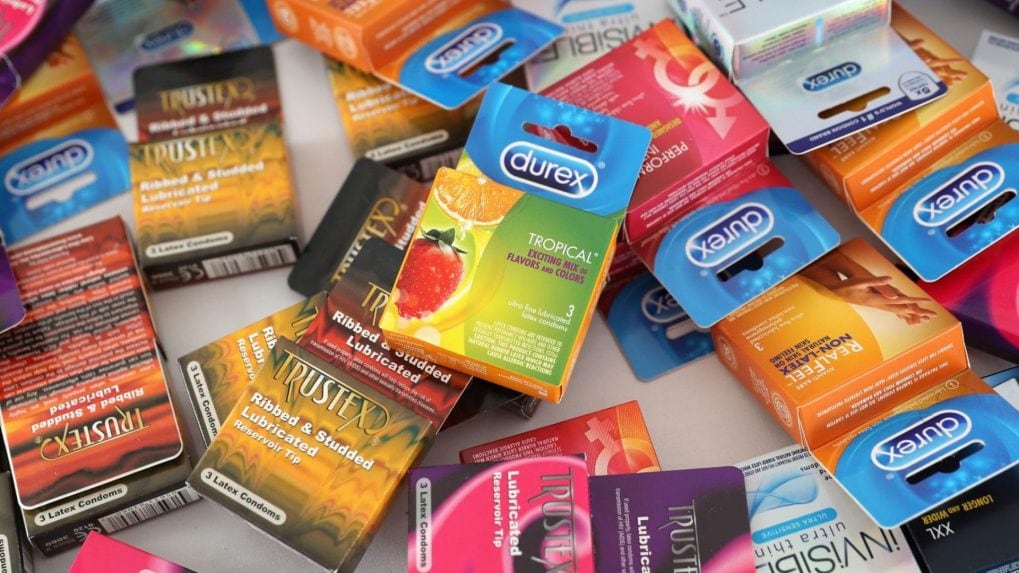Digital
Why OpenAI is hiring 100 ex-bankers: Inside the ChatGPT-maker's secret project to automate Wall Street's grunt work

A recent report by influencer marketing platform Qoruz revealed that over 337,000 posts by 112,000 influencers have generated 2.2 billion engagements, reflecting India’s growing comfort with conversations around sex and wellness.
The tone of condom brand communication has moved beyond protection and prevention to themes of pleasure, openness, and relationship health.
According to Qoruz, 22.19 percent of arts and entertainment creators use humour, storytelling, and pop culture to normalise sex conversations. Mumbai (22.9 percent), Delhi (14.8 percent), and Bengaluru (6.2 percent) dominate this space.
Micro-influencers lead the way, contributing to 51% of posts, as brands favour relatability and authenticity over celebrity endorsements. Women creators (56 percent) have also played a slightly bigger role than men (44 percent) in shaping sex-ed content.
Notable collaborations include Dolly Singh’s 2024 #CondomNahiManforceBolo campaign, Suyyash Rai and Aradhana Sharma’s Ultrafeel Condoms initiative in 2022, and Bipasha Basu and Karan Singh Grover’s Playgard ad in 2017.
The beginning of the shift
Aditya Gurwara, Co-founder and Head of Brand Alliances at Qoruz, said influencer marketing became mainstream about five to six years ago, drawing condom brands into the ecosystem as social media became central to youth engagement. Piyush Arora, Founder of Saucee Media, noted newer entrants like Sirona, which launched Bleu condoms about three years ago, positioned around ethical sourcing and vegan latex. “Breaking into a market dominated by Durex and Manforce required unique product positioning,” he said.
Subhash Wadhwa of CreatorsClout added that the real acceleration began post-2018, with Durex taking the first-mover advantage in normalising intimacy conversations. “Social media gave brands the chance to educate users about safe practices and correct usage,” he said.
Brands began using creator-matching strategies and long-term partnerships to overcome hesitation, while influencers in the relationship, health, and progressive lifestyle niches joined the conversation earlier.
Mankind Pharma’s Playbook
Joy Chatterjee, Vice President and Head of Sales & Marketing (Consumer Division) at Mankind Pharma, said the company entered influencer marketing in 2021, as digital storytelling shifted from awareness to conversations. “For a category like condoms, traditional media was limiting — restricted TV slots, creative censorship, and a male-skewed narrative,” he said. “Influencers helped us talk about intimacy, consent, and responsibility in a relatable way.”
Campaigns like #LoveResponsibly and #ProtectionForAll kept the brand socially relevant, while collaborations during Valentine’s Day drove strong engagement. For EPIC Condoms, partnerships with health and wellness creators helped position the brand around “comfort without compromise.”
Last month, Mankind introduced Myra Kapoor, India’s first AI Condom Ambassador, to blend technology with intimacy. “AI influencers provide consistency and creative control while humans bring relatability,” said Chatterjee.
The Medium and the Message
Chatterjee shared that Connected TV (CTV) worked particularly well for the brand, offering a premium, uncensored storytelling experience. “Our YouTube CTV campaigns delivered strong completion rates and helped us reach quality audiences in a brand-safe environment,” he said.
Before influencers, visibility relied on TV, outdoor, and print — all limited by timing and interactivity. “Influencers filled that gap through two-way engagement,” Chatterjee noted.
Early challenges
In the initial phase, creators were hesitant to associate with condom brands. “We had to convince them we were promoting safe, consensual intimacy — not just selling a product,” Chatterjee said.
To address compliance concerns, Mankind built a brand-safe framework that balanced creative freedom with responsibility. “Once creators saw our intent was to normalise, not sensationalise, their comfort grew,” he added. Today, many creators proactively pitch ideas aligned with the brand’s tone — from humour-led to relationship-driven storytelling — a sign of how far the category has evolved.
Wadhwa added that social media helped brands overcome non-prime TV hour restrictions, delivering better reach, shareability, and youth engagement. However, hesitation remains among some influencers wary of backlash, citing the polarised reactions to Durex campaigns in 2019.
From Taboo to Talkability
Chatterjee noted that condom conversations are no longer male-dominated. “Women and Tier-2 audiences are now part of the dialogue — a shift from awareness to acceptance,” he said.
Influencers have also humanised condom brands, moving the messaging from functional — product, pleasure, protection — to emotional and responsible.
Compliance and Regulation
Manisha Kapoor, CEO and Secretary-General, ASCI, said the body has not recorded any influencer violations by condom brands. “Watershed hours apply only to TV ads with explicit content,” she clarified, adding that OTT platforms present more challenges due to ad placement during live streams.
She reiterated that ASCI guidelines prohibit indecent or vulgar advertising by societal standards, and “current principles remain sufficient.”
Chatterjee added that all of Mankind’s campaigns undergo a three-step vetting process to ensure positive, consent-led communication. “We consciously avoid sensational cues — our intent is to normalise, not provoke,” he said.
The New Normal
Influencer marketing has helped condom brands break taboos, foster open conversations around protection, and stay culturally relevant.
“The shift from male-focused communication to inclusive, couple-led storytelling happened because of influencers,” Chatterjee concluded.
From purpose-driven work and narrative-rich brand films to AI-enabled ideas and creator-led collaborations, the awards reflect the full spectrum of modern creativity.
Read MoreIn a wide-ranging interview with Storyboard18, Sorrell delivers his frankest assessment yet of how the deal will redefine creativity, media, and talent across markets.